Tuscany in June Siena Day 2
The morning starts off as the day before, a fraction less early, we park in the same space and I don't forget my bag in the car. We head for the cathedral, mainly to take some photos with the sun
and then go up to Basilica di San Domenico from where the view of the medieval town is truly spectacular.
After visiting the church, which is free and worth a look for the paintings, a panoramic street takes us down to Santuario di Santa Caterina. The shrine of Santa Caterina is based around the house where she lived. It's a beautiful place in the early morning sunshine, the stone balcony with geraniums and a view of the narrow streets and brick buildings below.
Downstairs there's also the bedroom oratory, the small cubicle where Catherine used to pray and to rest with the stone where she would lay her head. It's a pleasant place to visit and from there we walk down to Fontebranda Fountain, one of the medieval fountains of Siena, and are surprised by how large it is and by the quiet peaceful atmosphere.
and then go up to Basilica di San Domenico from where the view of the medieval town is truly spectacular.
After visiting the church, which is free and worth a look for the paintings, a panoramic street takes us down to Santuario di Santa Caterina. The shrine of Santa Caterina is based around the house where she lived. It's a beautiful place in the early morning sunshine, the stone balcony with geraniums and a view of the narrow streets and brick buildings below.
We have a look at the church but especially the kitchen oratory, with its many paintings showing scenes from Santa Caterina's life, a beautiful blue and gold coffered ceiling and fine floor of polychrome majolica tiles.
Next it's time to visit Palazzo Pubblico, also free in these post-Covid days. Torre di Mangia is closed but the rooms in the main palace with their splendid frescoes can be visited. They are unusual for the time in that they were commissioned by the governing body of the city, rather than by the Church or by a religious fraternity and many of them depict secular subjects instead of the usual religious subjects typical of Italian art of this period.The most famous of the secular frescoes are three panels in the series on government in the Hall of the Nine (also known as Sala della Pace) by Ambrogio Lorenzetti known as The Allegory of Good and Bad Government. The frescoes depict the consequences on the town, society and ordinary people of a good or bad system of government and deserve a long and detailed look.
We also linger to look at those in the other rooms, in particular in the Anticappella and cappella and Sala del Mappamondo with the fine Maestà by Simone Martini. The Sala del Risorgimento also has interesting frescoes. It's yet another enjoyable visit.
We also linger to look at those in the other rooms, in particular in the Anticappella and cappella and Sala del Mappamondo with the fine Maestà by Simone Martini. The Sala del Risorgimento also has interesting frescoes. It's yet another enjoyable visit.
When we come out we head for a part of the centre we hadn't yet explored in search of a nice place for a picnic, towards San Clemente in Santa Maria dei servi which is also open and free to visit, but from where the promised splendid view of Siena is only visible by standing up at the top of the steps. We find a rather uncomfortable stone bench but it's not a place to linger and after dealing with sandwiches and coffee we set off again through the historical centre, ending up in the pleasant square near Basilica di San Francesco for a rest.
After visiting the church and more wandering through the centre we finish our day in Piazza del Campo. We sit down in the shade on this warm and pleasant and quiet June afternoon and just admire the view of the square, Torre del Mangia and fine red brick palaces. Beautiful Siena and its art has not disappointed us.
After visiting the church and more wandering through the centre we finish our day in Piazza del Campo. We sit down in the shade on this warm and pleasant and quiet June afternoon and just admire the view of the square, Torre del Mangia and fine red brick palaces. Beautiful Siena and its art has not disappointed us.
On the way back to Colle di Val d'Elsa we stop at the tiny Monteriggioni village, it doesn't take long to explore, just a few houses within splendid medieval walls.
Our last stop is the quiet Abadía a Isola, totally deserted, a peace and calm of warm brick in the soft light of the late afternoon in the Tuscan countryside, we are so glad we decided to visit these beautiful places.

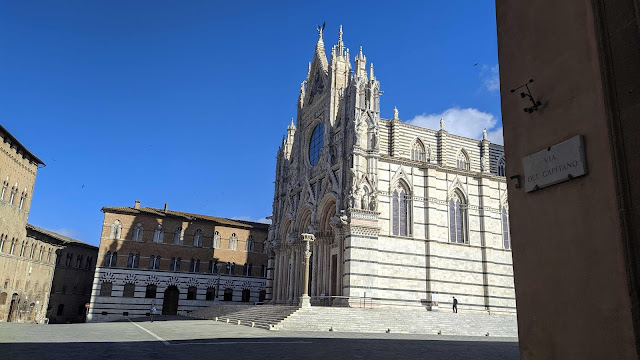

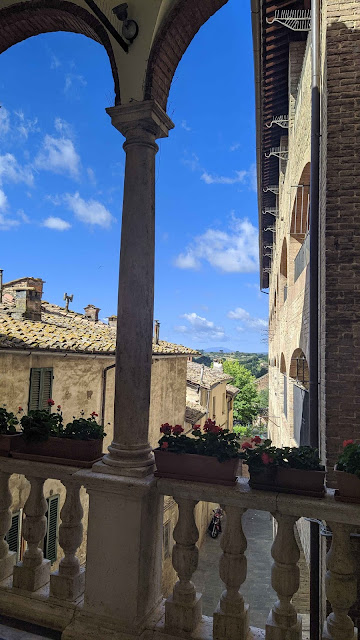

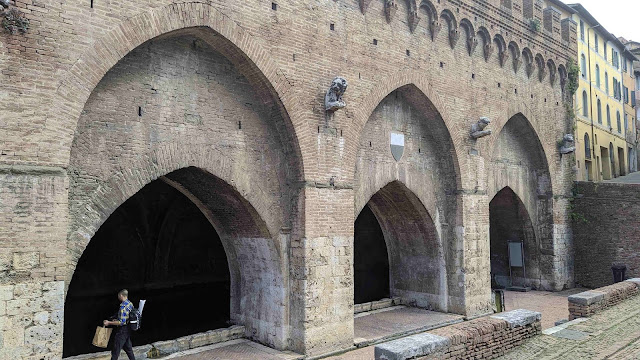
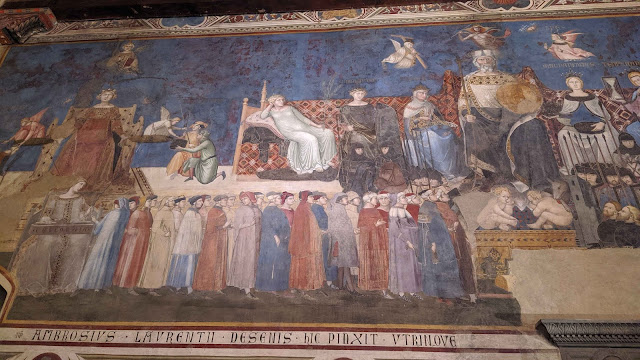

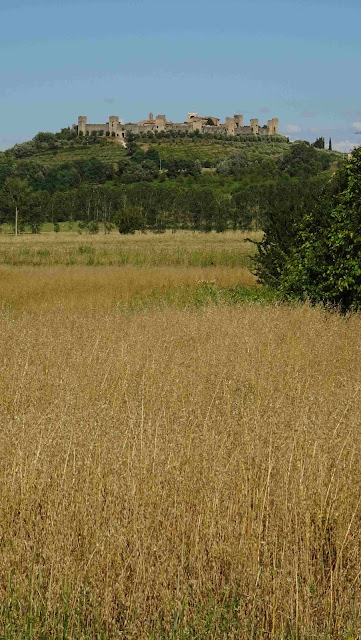
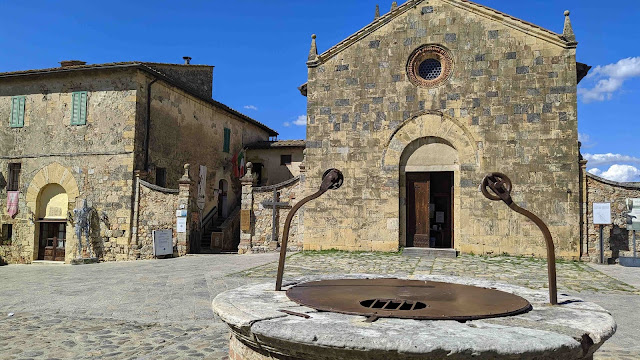

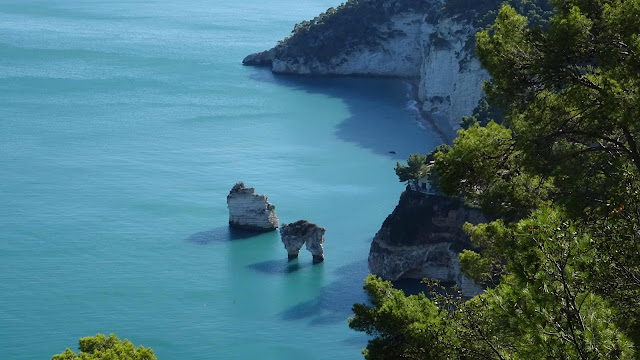
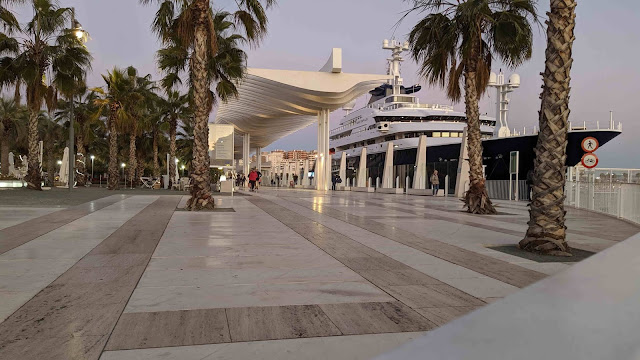



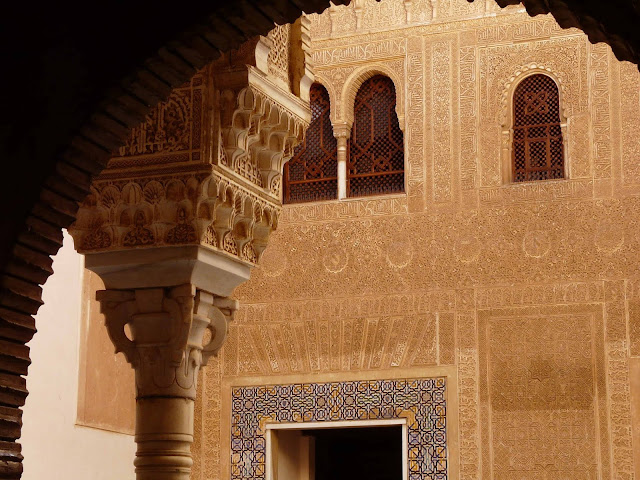
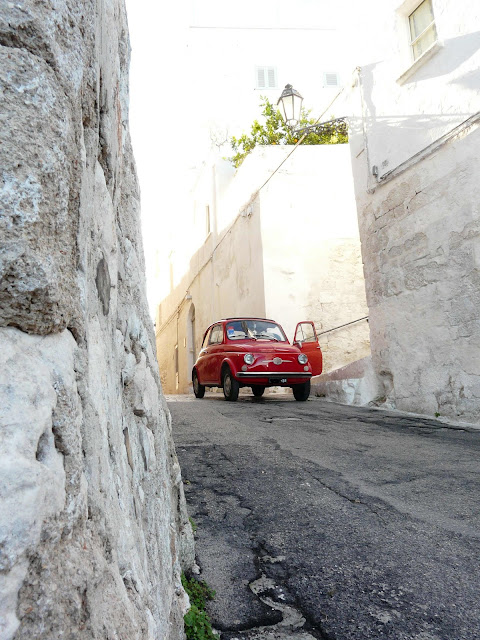
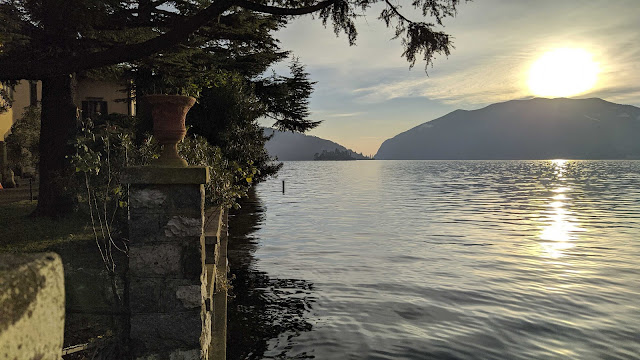

Comments
Post a Comment